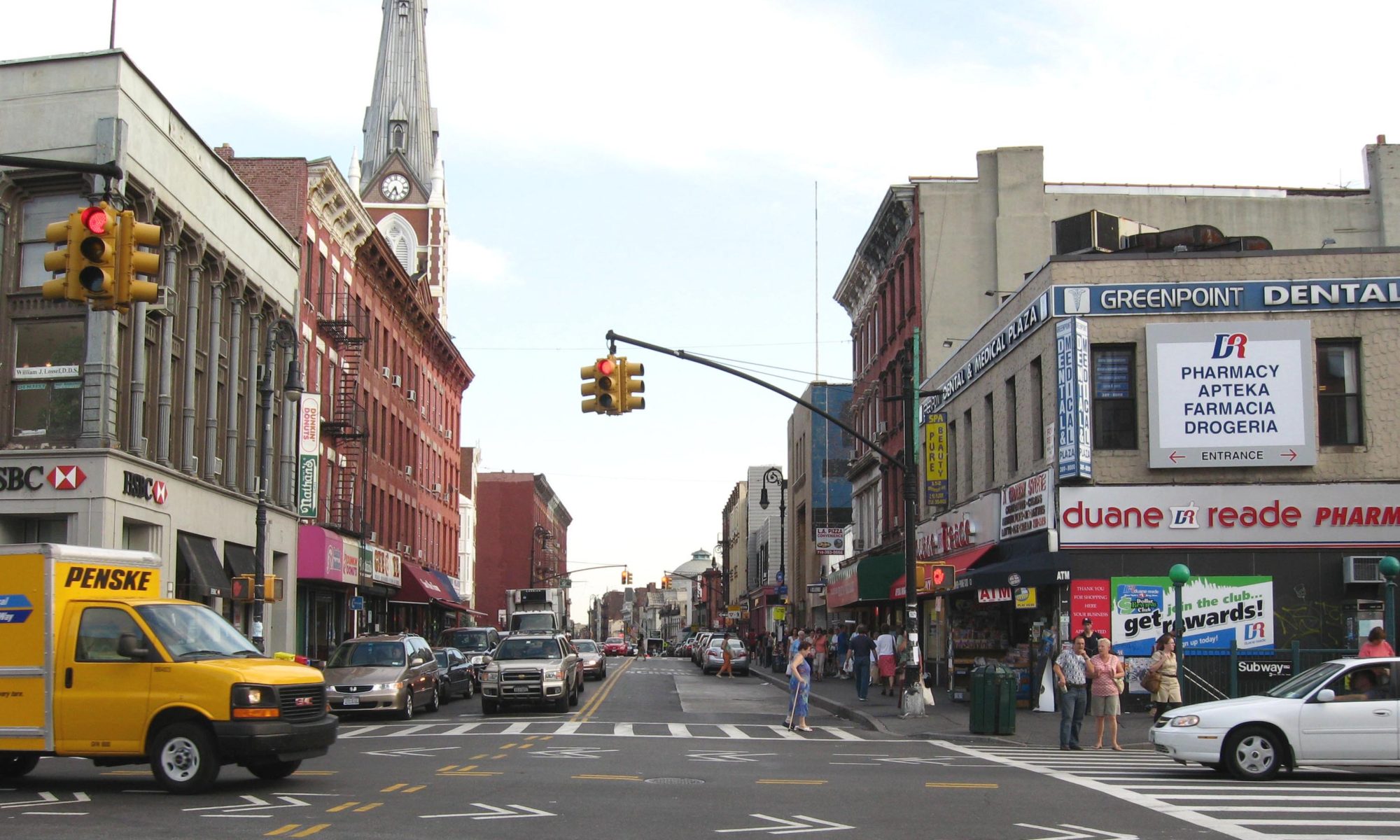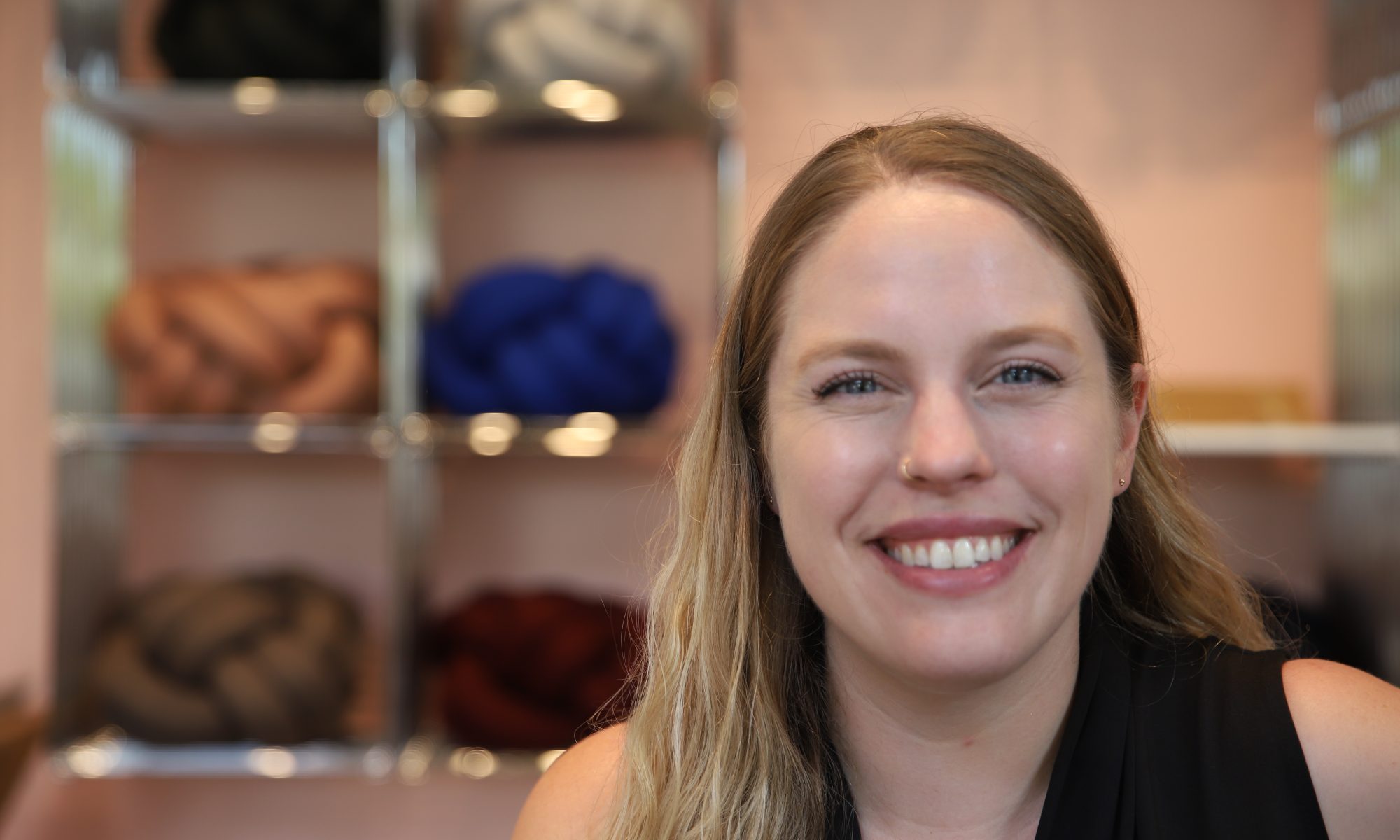By Alexander Bernhardt Bloom | alex@queensledger.com
Natural light comes streaming in through the ceiling windows by day at 34 Norman Avenue. The newly minted commercial space was once a zipper factory, more recently a warehouse for a private owner’s hoards of scraps and refuse. When Caitlin Maestrini, whose Scandinavian furniture showroom opened to the public there on Friday, first took over the lease on the space it had dirt floors.
These have been paved over with smooth, gray cement now, to give a stable setting for the feet of the sofas and coffee tables and storage shelves that populate the 4,000 square feet of store and cafe within 34 Norman Avenue’s walls, the realization of a personal dream for Maestrini.
Now the space beneath the address’s vaulted ceilings is full of soft light and soft furniture, objects that are easy on the eyes and which sit gently in a visitor’s hands. A space as such doesn’t naturally suggest the descriptor cozy, but that is the feeling, more than any other, that Maestrini has achieved there.
A major part of that achievement is in the lighting, and the natural bits of it that spill in through the skylights and broad windows are supported by lamps set up in exhibition about the store, essential to Scandinavian interior decor as they are.
Before she was a furniture store owner Maestrini was a product specialist and education manager with an Italian designer lighting company, and traveled the US teaching sales representatives about the installations they sold. Before that, Maestrini was an educator who taught high school students about the fine arts and expression. In each of these varied stations there seems to have been something central in common: Ms. Maestrini wants to help people better understand how to use design to enhance their lives.
* * *
The Danish concept called hygge (hooe-gah) had its moment of popularity in the US in the 2010’s, and a fair amount of ink had been spilled and a fair number of marketing campaigns mounted, with hygge their focus, long before anyone had uttered the words covid and nineteen together.
The pandemic changed the situation some. Hygge is all about creating cozy spaces and cozy moments, burrowing in with the ones that you love and a glass of wine or hot cocoa under the flicker of candlelight while darkness and terrorizing storms haunt the world outside.
After March, 2020 that sounded just about right. People started investing more in their homes as they increasingly confined in them and many spent the contents of their stimulus checks on carefully selected objects that they hoped would brighten their lives inside and under quarantine.
It was a couple of years before all of this that Maestrini had traveled the constellation of Scandinavian countries north of Europe where she was studying a part of her master’s program in interior design. Her base was London, but she became fixed on the design principles and styles she began to discover further north, – later she would also discover Scandinavian ancestry in her family – and when she made her return to the US the images of Mid-Century Modern furniture and fixtures made it with her.
She founded Teak in 2021, to begin with, in order to bring Scandinavian home furnishings to the US that she hadn’t been able to find here since her return.
* * *
On the afternoon of the day before Teak would first welcome visitors inside its new location the sound of pneumatic drills pierced the interior air. There was the smell of fresh paint and a frenzy of activity as Maestrini and the ten employees who make up her team and a host of others sought to finish stocking shelves and straightening wall hangings and all of the other big and small details that go into making a new place feel like a new home.
She made her way to a quiet corner and put her phone face down on a coffee table, empty otherwise save for a simple vase with a buoyant bouquet of flowers, and sat on the sofa beside it, one among the models recognizable from the company’s website.
Once a pop-up shop, she’d moved the business to a little storefront space in Greenpoint about a year ago and now in the new, expanded space, – which will include a cafe and Scandinavian-styled deli run by her friend and collaborator Leah Flannigan – Maestrini felt Teak could finally set down and realize its real purpose.
“There are two main missions:” she explained, looking out into the room heaped with imported domestic products, “Educate people on hygge and Scandinavian lifestyle, and inspire them to create a beautiful space at home.”
“This place, New York, is chaotic,” she went on, “we’re always in a rush, we’re always in chaos – when I come home I just want a place to decompress.”
It was a notion not incongruous with the New Yorker mentality, Maestrini argued, even if the focus on minimalist, utilitarian living often called for in hygge seems to be at odds with New York’s striving, competitive, race-to-the-top attitude.
“When you’re trying to survive in this city you still need a place to land at the end of the day.”
Her project, she would allow, does in any case present some quietly transgressive ideas. To begin with, it is a physical showroom in the digital age, a brick and mortar store to which people are invited to come to touch and spend time with the things they might otherwise click on and have delivered.
Also, the products Maestrini and her team sell are meant to last, nothing of the turn-and-burn of conspicuous consumption of goods Americans generally use in their households and otherwise.
“In Scandy countries you would save for the pieces that you knew that you wanted to have in your home,” finally buying them with purpose and treating them with care. “You would have people passing down furniture to you, and you would also be buying your chairs and your tables and things to ultimately pass down to someone else as well.”
Maestrini’s is a woman-owned and led business focused on equitable pay and direct-sourcing from other small business manufacturers and artisans. The furniture and products her shop sells in turn are far from cheap, but they’re meant to be used a great deal and to last and each has a story to tell.
More important than anything, she explained, is the importance of changing peoples’ perspective on domestic life. Hygge encourages simple comforts and physical togetherness which are often missing in the age of increased isolation and virtual narcissism and vicarious living through screens and headsets. A home shouldn’t be just for crashing, a home shouldn’t be a lonely place, according to the hygge principles.
Ever the educator, Maestrini returned the meandering conversation to its origin question, objective: “I’m here to talk to New Yorkers about small space solutions, to talk to New Yorkers about Hygge. I want people to create a home that they’re happy with, where they feel cozy, where they feel calm.”
We might yet see our domestic space in a different light.

